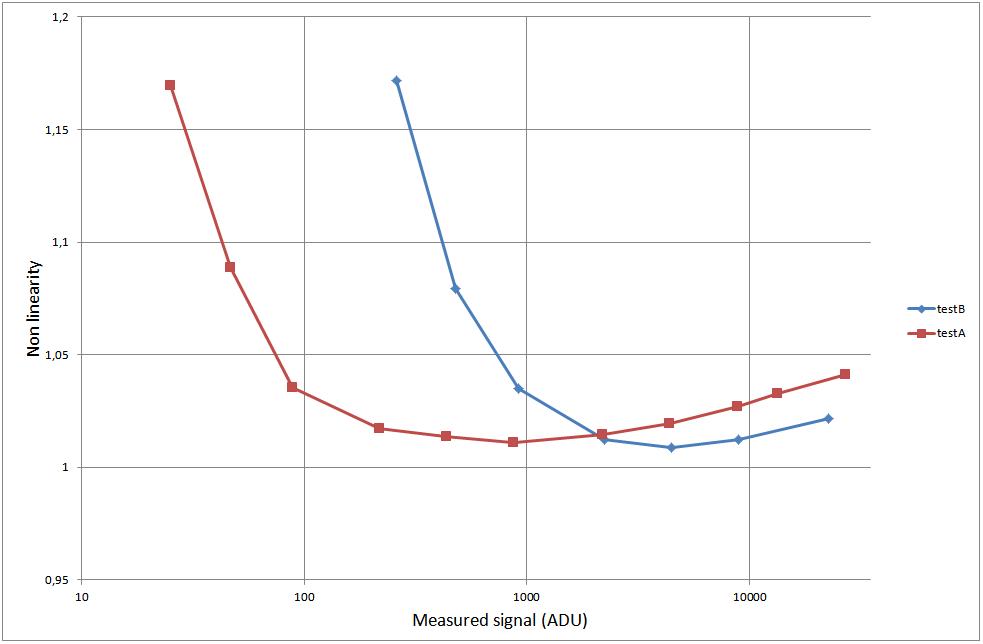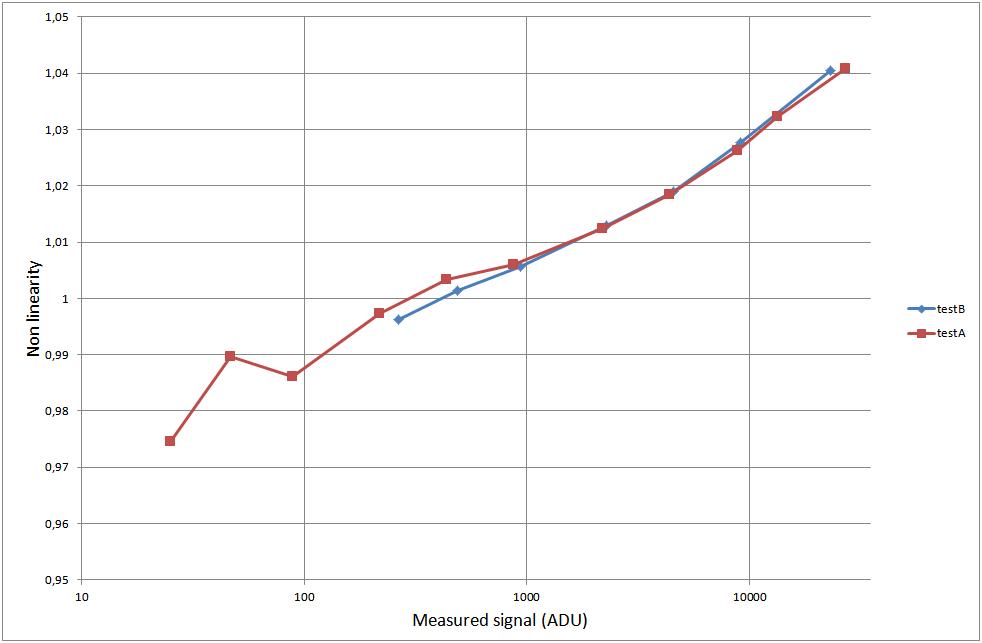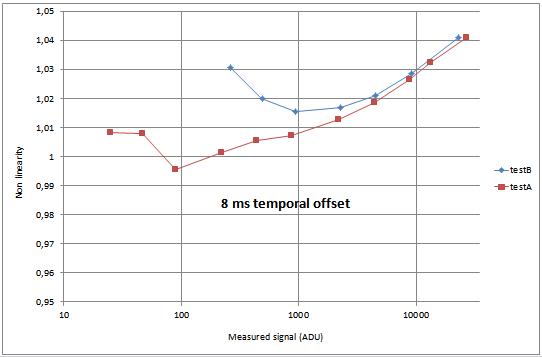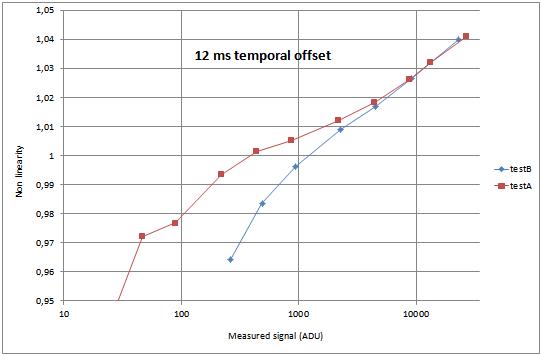Back
Audine with Ethernaude = non-linearity measurements with radiometric method
Calculation of non-linear response
To plot the non-linearities, I had to assume a certain law and plot the deviation from this law. I started with a linear law:
Expected_signal = k * exposure
where k depends on the detector illumination. Then the non linearity is typically calculated in CCD with:
Non_linearity = Measured_signal / Expected_signal
Below I show plots of the Non_linearity as a function of Measured_signal. It does not matter very much if the horizontal axis
is the Expected_signal, the Measured_signal or exposure. In all cases, the curve would look almost exactly the same.
The important quantity is the non-linearity, calculated as above.
Now, if the Measured signal is in the form:
Measured_signal = a0 + a1*exposure + a2*(exposure^2) + (a3*exposure^3) + ...
Then the non-linearity becomes:
Non_linearity = (1/k) * (a0/exposure + a1 + a2*exposure + a3*(exposure^2) + ...)
In particular, when the constant of proportionality k is changed, the non_linearity
curve stays the same, but it is shifted upwards or downwards. This makes this kind of representation very practical : we don't need to
find the actual slope to know how the non-linearity curve looks like.

The observed non-linearities are very high, larger than 10%. The apparent "divergence" at very short exposures is a clear signature of an offset a0.
It is also spectacular that the two curves look so similar, apart from an horizontal shift. The fact that the "divergence" does not occur
at the same amounts of signal for both tests suggest that this source of non-linearity does not come from the CCD.
Possibly, it is a temporal
offset due to the shutter which does not take exactly the same time to open and to close.
Offset from shutter
To improve the model of the CCD response, I used a linear law including a temporal offset:
Expected_signal = k * (exposure + offset)
With offset = 10 ms I obtain a perfect agreement. I also had to adjust the values of the k constants, but they do not influence the
shape of the non-linearity curves, they only shift the curves upwards or downwards.

The determination of the temporal offset is very sensitive. If I choose 8 ms or 12 ms, I obtain the following curves:





